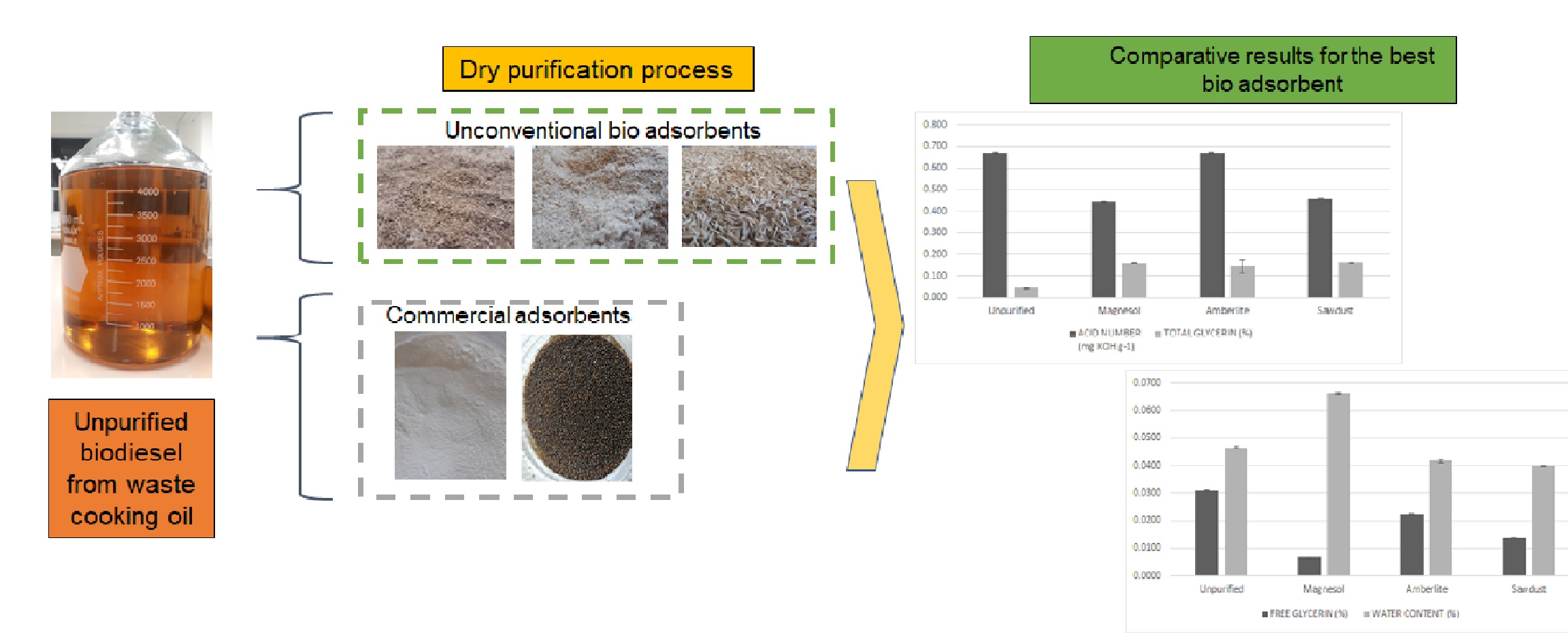The dry washing method is an alternative to replace water washing, thereby reducing the negative impacts of contamination. However, commercial adsorbents come from industrial processes that, due to their composition, may not be such a sustainable resource in the global biodiesel production process. In this study, the use of organic residues, such as sawdust, coconut fiber, nutshell, rice husk and water hyacinth fiber, were proposed as bioadsorbents for the purification of biodiesel from waste cooking oil (WCO). Quality parameters such as the acid value, water content, and free and total glycerin content were evaluated and compared with those of commercial resins such as Magnesol® and Amberlite™. Promising results were obtained using sawdust during the purification process, achieving a 31.6% reduction in the acid value compared to that of unpurified biodiesel, the reduction was 31.3% more efficient than Amberlite™. Sawdust adsorbed free glycerin at 55.8%, being more efficient than Amberlite™. The total glycerin values were similar between commercial resins and sawdust. A water content values were similar than Amberlite™ and better than that with Magnesol®, at 4.3% and 39.81%, respectively. These results show that sawdust can be used as an alternative bioadsorbent in a dry purification method for biodiesel being a residue with less environmental impact.

